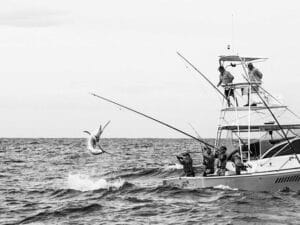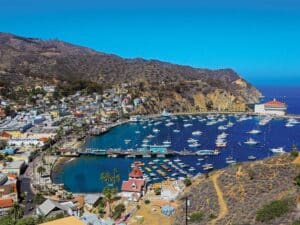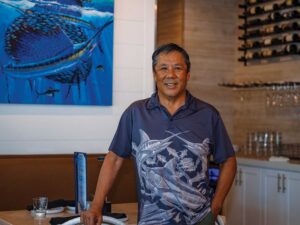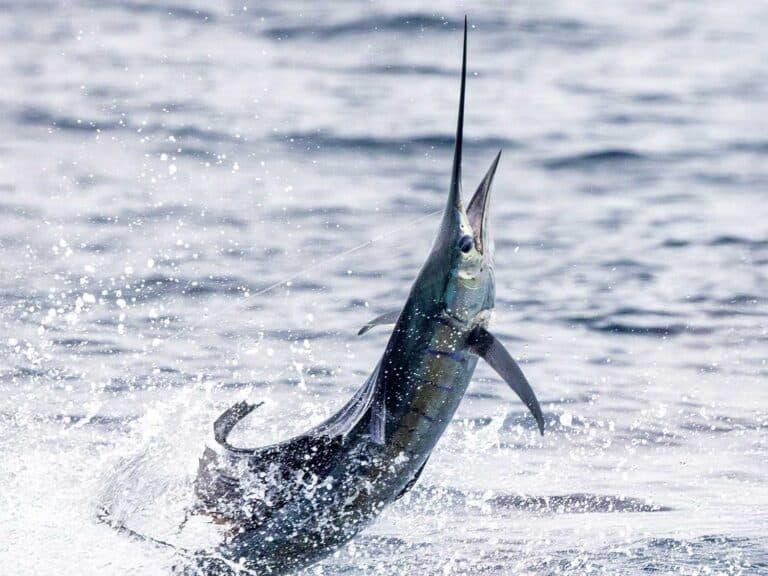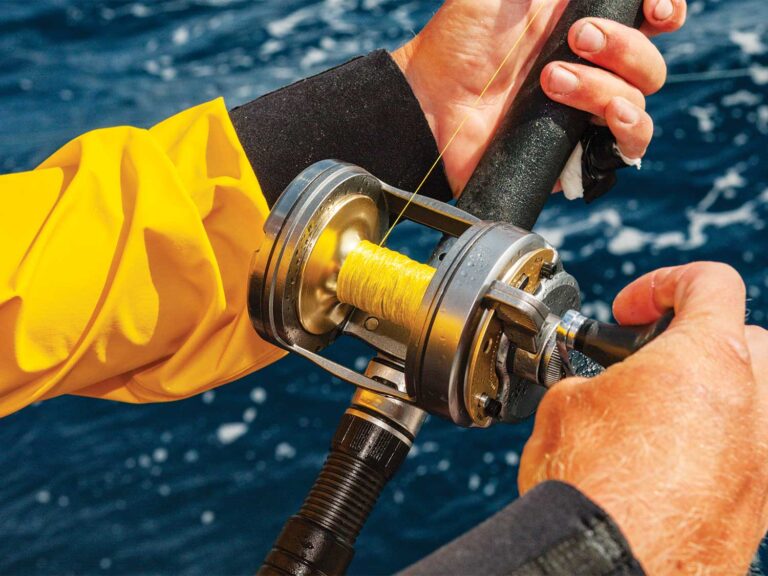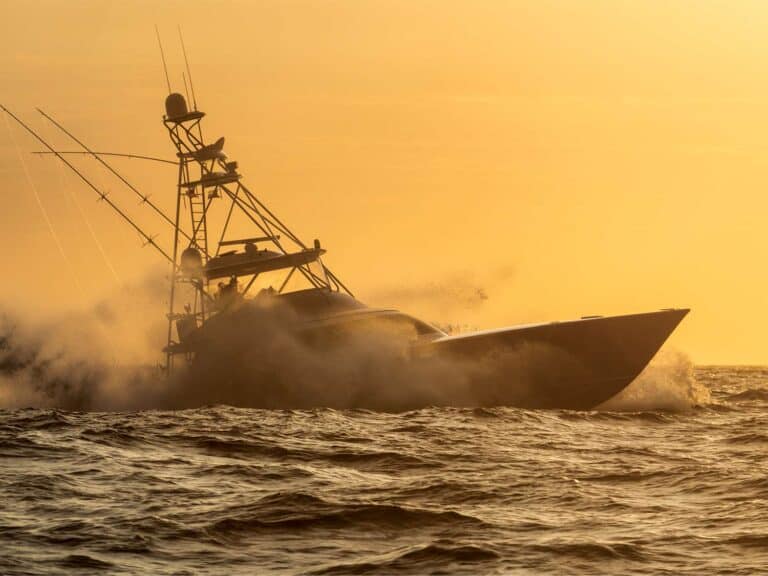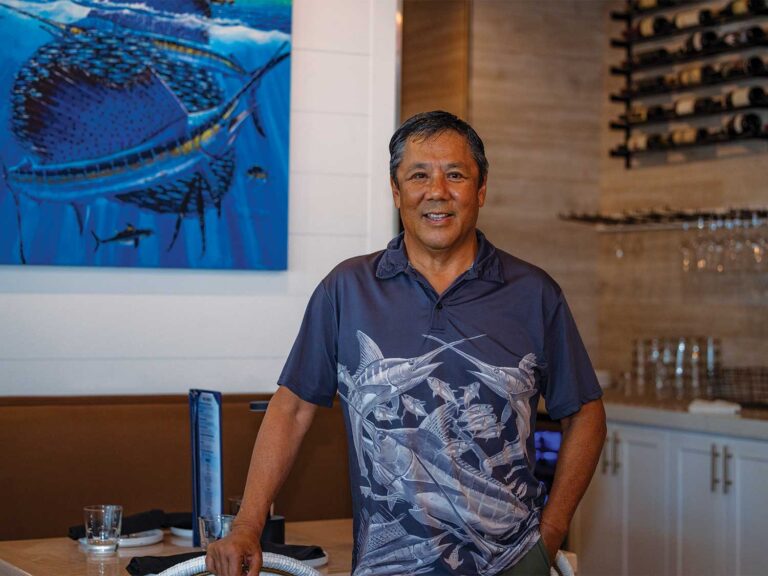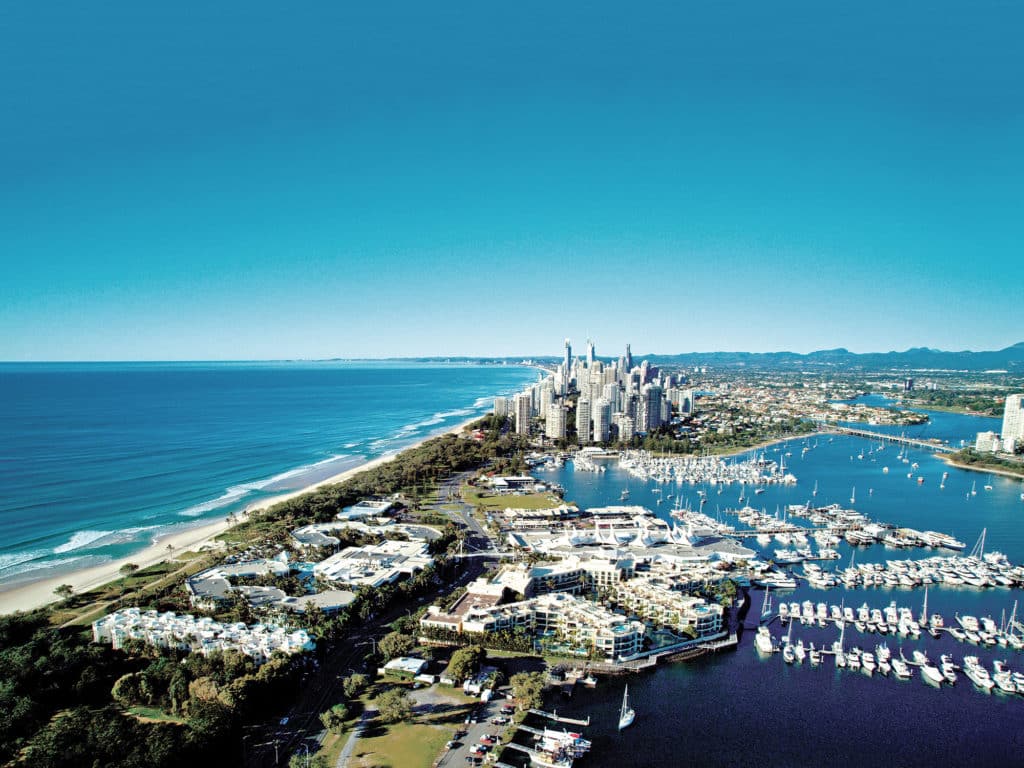
The phenomenal blue marlin fishing during the past few years off the Gold Coast in southern Queensland, Australia, might very well be in the same category as other hot spots like Cape Verde.
Boats regularly catch four or five blue marlin a day, and some have even tallied 11 when the bite is really on. It’s not just about the numbers here, though. Big girls frequent these waters, and a crew recently weighed a 900-pounder. The construction of the Gold Coast Seaway is a large reason for the spike in blue marlin success. More vessels are able to target these fishing grounds (once hard to reach at 20 miles offshore) than ever before.
Gateway to the Action
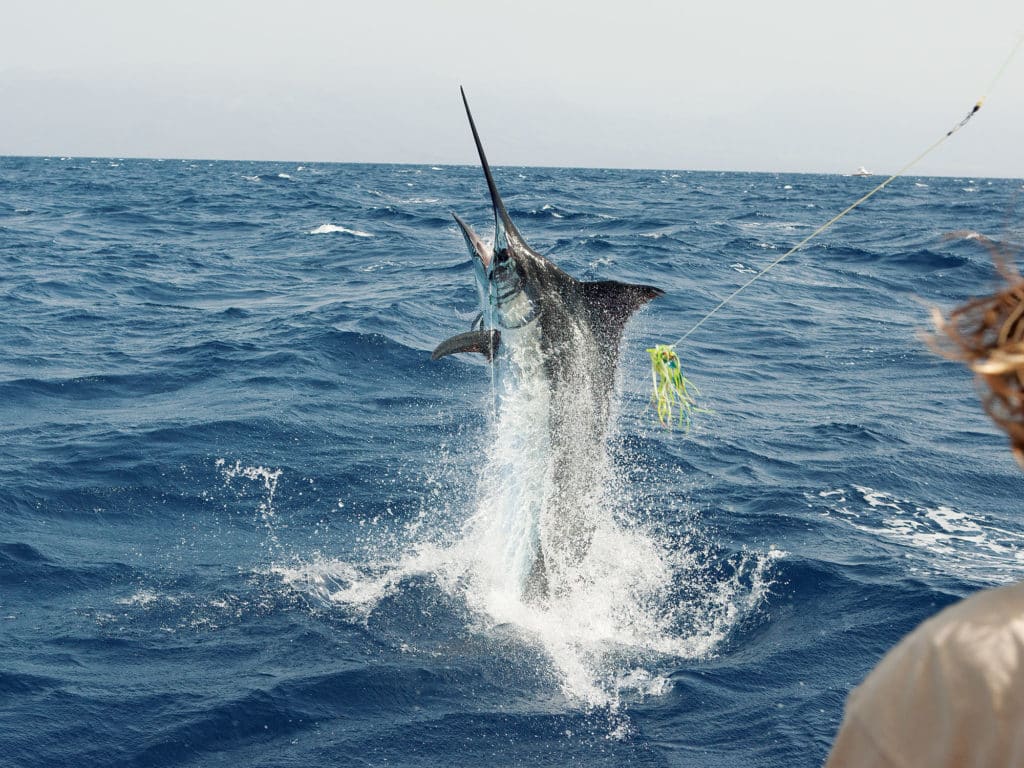
The Seaway is one of the most successful maritime achievements in all of Australia. Apart from generating much safer access to the open Pacific for the fishing fleet, the enormous project was essential to stabilize the mouth of the Nerang River and Gold Coast Broadwater. The constant sand erosion shifted the river bar northward at an estimated 30 yards a year, which posed a serious threat to Stradbroke Island on the river’s northern bank. In fact, a hundred years ago, the small coastal town of Moondarewa was situated right where the river mouth is today.
The Queensland government committed millions of dollars to fix this major problem and designed the massive Seaway, using a million tons of heavy boulders from a nearby quarry and 4,500 25-ton cement blocks to build it. The government also built a huge bypass pumping system on the southern side of the seawall to transfer 500 cubic yards of sand per hour through pipes under the Seaway and past the northern seawall to allow a better tidal flow and a deep navigation channel at all times.
Blue Marlin Bonanza
The billfish action off the Gold Coast hit an all-time high during the past decade, with plenty of juvenile black marlin caught inshore and an incredible run of blues along the continental shelf 20 miles offshore. The fishing is so hot that a number of private boats and anglers from along the east coast head to the Gold Coast to fish, which has led to an incredible increase in captures and tagging statistics. Even the specialized offshore outboard-powered trailer boats are out there competing with the big boys. Just last season, a 22-footer raised 18 blues, hooked 14 and tagged nine up to 500 pounds.
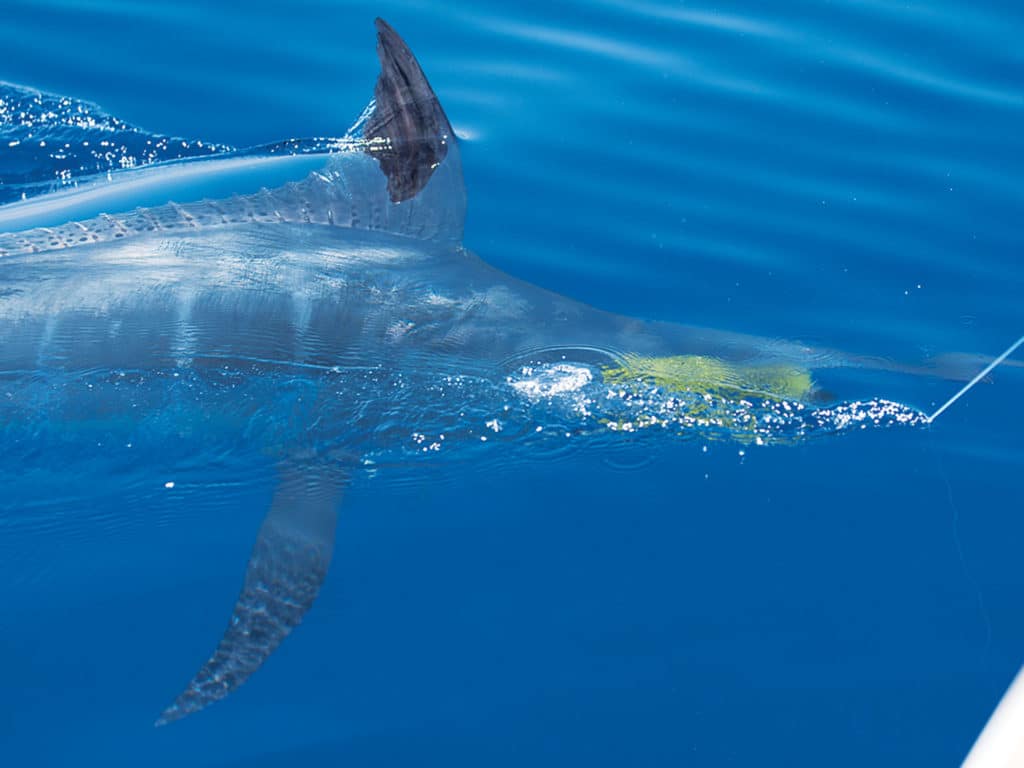
All this marlin action has generated a huge boost in the number of anglers joining the Gold Coast Game Fishing Club and continues to contribute to the regular tournaments and blue marlin shootouts. The sheer number of blues also enticed light-tackle anglers to try their hand at filling the uncontested line-class blue marlin category record book for the Game Fishing Association Australia. The local 41-foot G&S French Look III is regularly out there bait-and-switching on light tackle; just recently, angler James Holt captured a pending Australian record, a 375-pound blue, on 16-pound tackle. The same vessel hooked dozens of blues on ultralight tackle, but most were short-lived encounters.
Gold Coast Tackle and Tactics
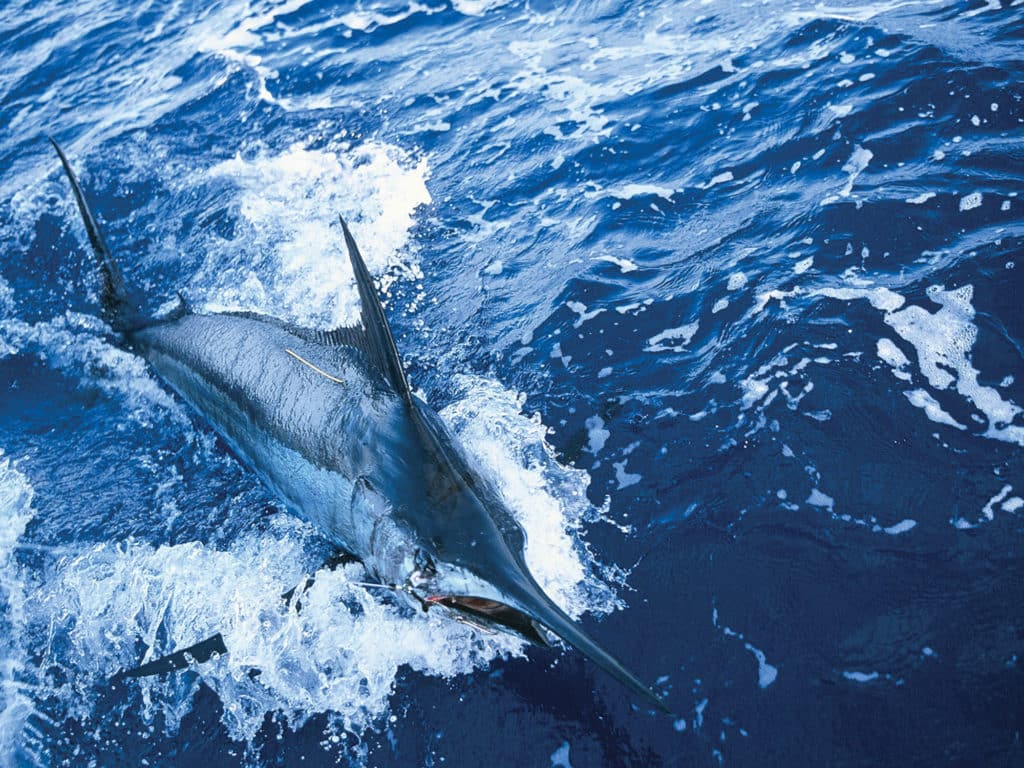
The type of tackle varies, though. Most anglers along the Gold Coast tend to use heavier 80- and 130-pound tackle in case a big fish climbs on. Many of the trailer boats prefer to fish with stand-up tackle along with specialized harnesses and fighting belts. They also prefer to use wind-on leaders to move around the deck with the rod to clear outboard motors when needed. Heavy-tackle anglers prefer bent-butt chair rods, and most use four or five 130-pound outfits. A number of big fish have been hooked and lost on lighter tackle, and many argue heavier tackle has its advantages on the average 300- to 500-pounders for a quicker release.
The anglers here prefer to troll a spread of Aussie-made lures. There are at least half a dozen manufacturers making some very good lures, but the successful ones, such as the Pakula Sprocket and the Nightmare range from Top Gun, have been around for years. Many still depend on the foreign favorites: the Mold Craft Wide Range and Joe Yee’s Apollo and Super Plungers. The Marlin Magic range tends to find its way onto many vessels, especially the large Ruckus.
The Veteran
Capt. Ross McCubbin runs the 40-foot Black Watch Lucky Strike, and he spends more time on these grounds than anyone else. He is the guru for any kind of fishing off the Gold Coast; for marlin, there’s none more experienced. During the cooler spring months when the Gold Coast quiets down, McCubbin takes his vessel north and charters heavy-tackle anglers from Lizard Island. He’s lost count of how many grander black marlin he’s released, but he will be the first to tell you catching big blacks is completely different from catching big blues. “The speedy blue needs far more attention in the drag-pressure department because of the amount of line it can take,” says McCubbin.
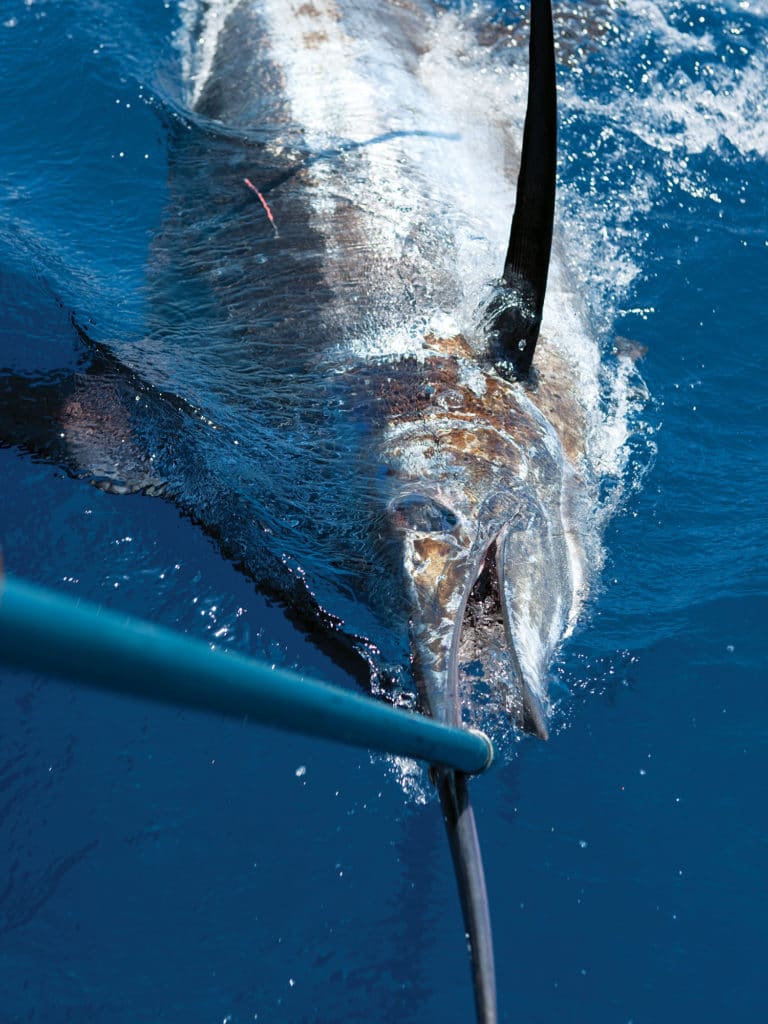
“The run of blues off the Gold Coast over the past decade has been amazing. There’s no rhyme or reason to why so many are there. All along the edge of the continental shelf, the bottom drops off the 100-fathom edge and doesn’t appear to offer any real structures or canyons, yet the bait gathers there in droves,” says McCubbin. “To cover ground and find the bait, we troll a spread of four to five lures, depending on the sea conditions. Once we find bait, some of my more experienced anglers like to run teasers and bait-and-switch the blues. But the average charter angler is pleased to keep working the lures armed with hooks to increase their chances. We’re quite happy to do it either way,” McCubbin reckons.
Too Large for the Door
“Last season was very productive for us. During one particular day, boats were hooked up everywhere. I got a call on the radio that a private vessel was connected to a real animal. The 35-foot Bertram Barco was fighting the beast for over two hours, and I could see it off in the distance, backing around. I decided to head in their direction to keep an eye on it, and the next thing I knew, we hooked up to a solid 500-pounder,” says McCubbin.
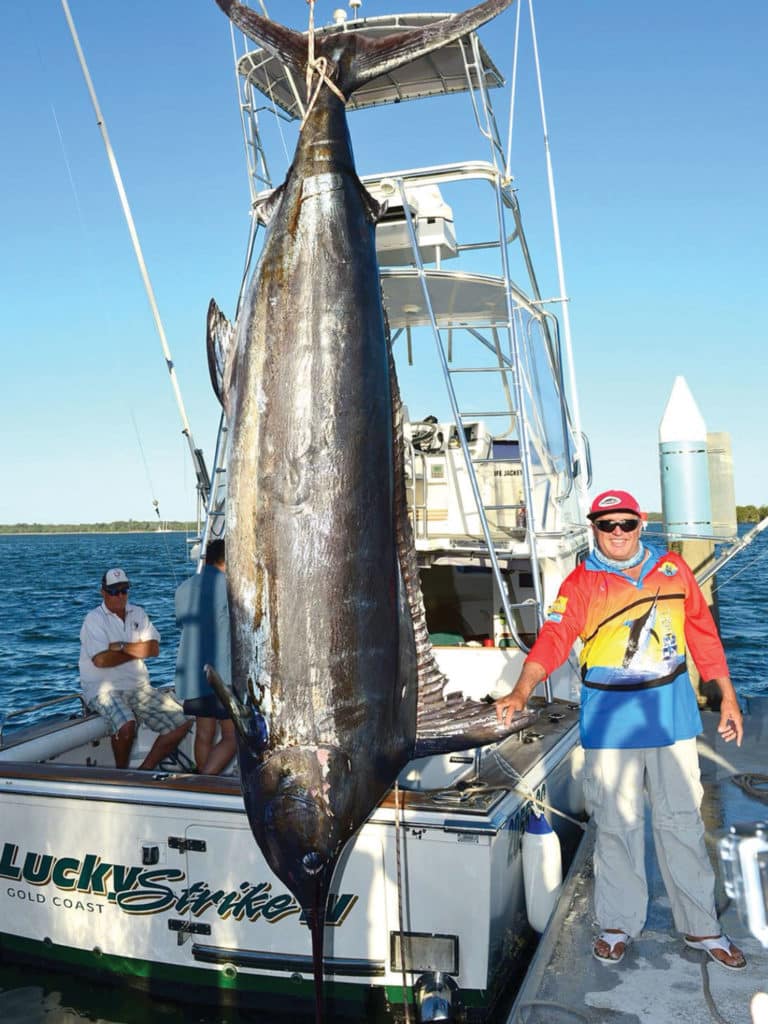
“My angler had never caught a blue, and after such a tough fight, he was wrapped to see his first one swim away with a tag. Meanwhile, Barco was still busy fighting its fish,” continues McCubbin. “We trolled around the area but never saw the big fish jump. We could see the angler in the chair, working hard, but unfortunately, the marlin died during the fight.”
“We went over to check out its size. In the water, she looked mighty big, possibly a grander. The crew on Barco wasn’t able to get her in through the transom door — she was too big. The door on my Black Watch is much wider, and after a lot of mucking around, we got their blue on board my boat. At the weigh station, she registered 892 pounds,” McCubbin recalls. The angler, Joel Purcell, along with Barco‘s owner, Vince Wregg, and his two sons, Leon and Jeffrey, told McCubbin they wanted to tag and release the blue, but they couldn’t revive her.
Blues in All Directions
Captains Barry and Brett Alty are a father-and-son duo who spend a lot of time on these grounds aboard their 50-foot Kiwi custom charter boat Mistress. The two have had some huge days off the Gold Coast and reflected to me on countless sessions over the past decade. “We’ve had many memorable times, but the best was tagging 11 blues in one day. We had only two anglers on board, and one guy was happy to catch all the fish. After battling 10 blues, he wearily let the other angler take number 11. They were all solid fish up to 600 pounds. During some busy weekends out there, you can look around and see boats backing up and chasing blues in all directions. It’s been hot here for quite a while now,” they both exclaim.
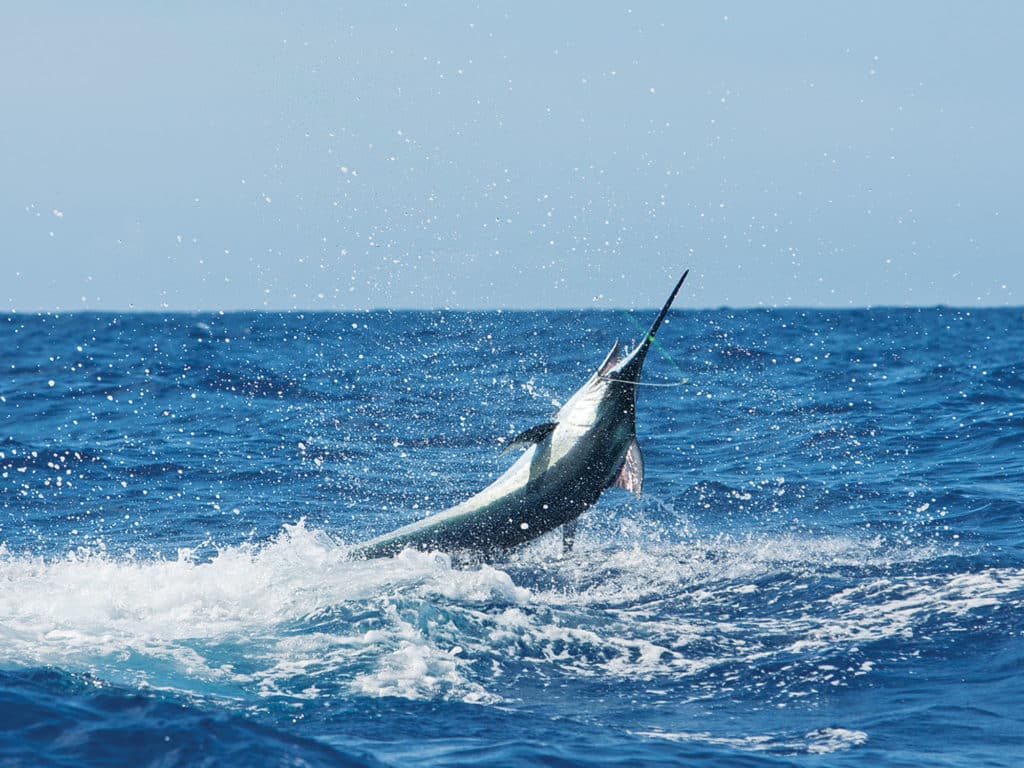
Travel Brief
Getting There
The Gold Coast is just a one-hour drive from Queensland’s Brisbane Airport, where many direct flights arrive from Los Angeles and other U.S. cities. An other option is one of the dozens of daily flights from Sydney Airport, operated by Qantas, Jetstar and Virgin Australia.
Lots to See
The Gold Coast is a buzzing town with a magnificent beach stretching out of sight. For those not interested in the beach activities, there are lots of theme parks, superb golf courses, clubs, theaters, bars, casinos and restaurants to explore. The extensive beachfront is lined with rows of high-rise apartments and hotels. Plenty of accommodations are available, ranging from small, inexpensive condos to five-star apartments and hotels. Keen traveling fishermen should stay at either the five-star Palazzo Versace resort, Sheraton Mirage Resort or Sea World Resort — they are all close to the magnificent Marina Mirage complex, where many of the charter boats are located.
The Local Fare
• Omeros Bros Seafood — This is one of the best seafood restaurants on the Gold Coast and offers the freshest Australian seafood, including delectable saltwater barramundi and mud crabs. Its seafood chowder with local snapper is the best I have ever tasted anywhere. It’s so good that I’ve often had it for a main course. The wine list here is excellent and includes all the best reds and whites from around Australia. omerosbros.com
• Glass Dining & Lounge Bar — This unique venue can’t get any closer to the Marina Mirage. The tables are set up on the boardwalk and make even the nonboating customers sit in envy as they look at the massive fleet of luxury craft of all sizes. The food here is first class, and the a la carte menu covers everything from gourmet pizzas to the freshest local seafood and free-range steaks. There’s an extensive Australian and international wine list as well. glassrestaurant.com.au
Charter Boats
Lucky Strike
Capt. Ross McCubbin
61-7-428729393
Ice Man
Capt. Bobby Jones
marlinaustralia.com.au/marlin_fishing.html
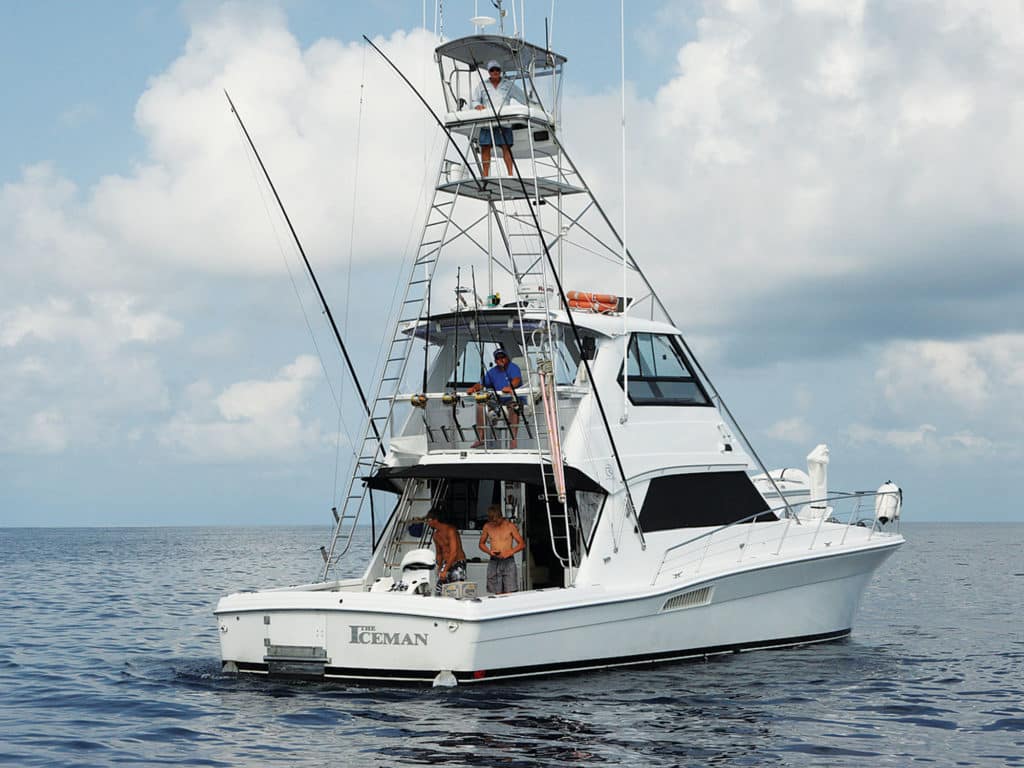
Viking II
Capt. Bill Billson
australianmarlin.com
Tradition
Capt. Tim Richardson
traditioncharters.com
Castille
Capt. Brad Craft
castillecharters.com
Mistress
Capt. Barry Alty
fishingmistress.com
Tips and Techniques
The Single-Hook Lure Rig
Over the years, captains have tried a variety of hook patterns and various ways to rig them. Most have finally settled on using just a single-hook rig. Captains Bobby Jones and Peter Kirkby are firm believers in this method and contributed to bringing this rig to the Gold Coast area.

“The idea basically came from Cairns years ago, when we started targeting huge blacks on lures,” say Jones and Kirkby. “Our hookup percentage was amazing, and the release of a lively big marlin with only one hook to worry about is much easier and safer. We both started using the same single-hook rig off the Gold Coast on the blues ages back.”
This effective rig for blue marlin lures is made with a heavy 500- or 600-pound monofilament trace that is fed through the lure head, allowing enough excess on the end to be twice the length of the skirt. Two sleeves are slipped on the trace and then the hook. The trace is pushed up through the first sleeve and then tightly pulled down to the eye of the hook. The sleeve is crimped, and the end of the trace is then pushed up through the second sleeve while keeping it nice and even. The second sleeve acts as a stopper behind the lure head so that the point of the hook sits just outside the skirt. Before crimping the second sleeve, the hook position needs to be checked and measured accurately. The rig is finished by wrapping the eye of the hook and the bottom crimp with either PVC tape or heat-shrink plastic to stiffen the hook-set so it won’t swing freely.
Drag Pressures
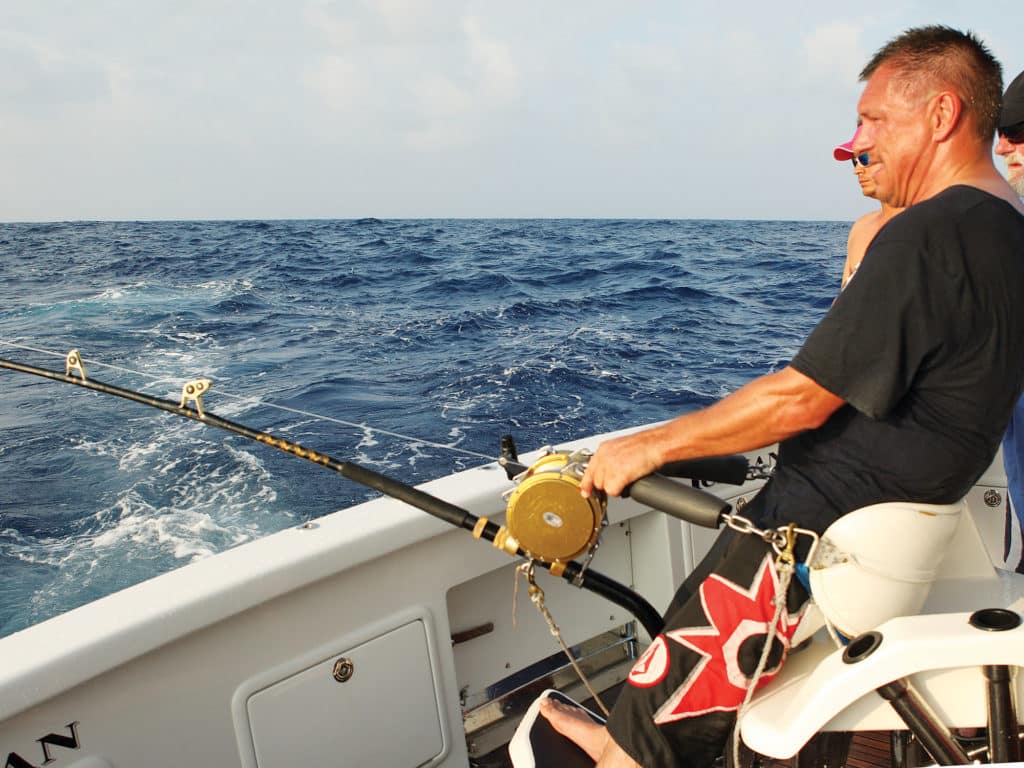
Capt. Ross McCubbin says drag pressures are critical for blue marlin, and many anglers on the Gold Coast use too much drag in an attempt to slow down one of these speedsters.
Anglers unaware or not quick enough get a nasty shock when line crackles off the spool at an alarming rate. Jones sets his strike drags at less than one-fourth of the line’s breaking strain, and he uses only 18 pounds of drag for his 130-pound line.
